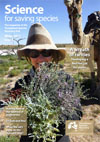Latest News
-
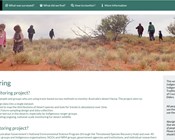
Arid zone monitoring website now live
Tue, 14 Dec 2021We are excited to share the new interactive website for the Arid Zone Monitoring project: AridZoneMonitoring.org.au
-
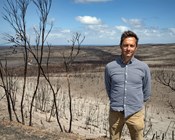
A golden opportunity realised, but so much more to do
Sun, 12 Dec 2021Hub Director Professor Brendan Wintle from the University of Melbourne talks about the huge body of research delivered by the Threatened Species Recovery Hub to help managers address Australia's extinction crisis, and the need for more.
-
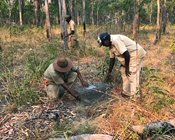
Building collaboration and two-way science
Sun, 12 Dec 2021Hub Deputy Director Professor Sarah Legge talks about how the hub worked to strengthen the engagement and participation of Indigenous people in the hub's research.
-
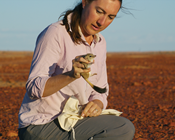
Kowari one of the first species to benefit from hub havens analysis
Wed, 08 Dec 2021Dr Kath Tuft talks about the benefits of the hub's research on safe havens, kowari and cat management for Arid Recovery, an independent not-for-profit running a 123 km2 wildlife reserve in South Australia’s arid north.
-

The experiences of early career scientists in the hub
Wed, 08 Dec 2021Over 100 early career researchers made an incredible contribution to the achievements of the hub. The hub also aimed to provide a highly supportive environment and developmental opportunities. We asked a few of our early career scientists about their experience being part of the hub.
-
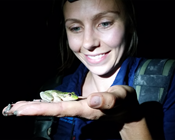
What was your hub student experience like?
Wed, 08 Dec 2021Almost 90 students contributed to hub research collaborations. We asked four hub students about what it was like to be part of the hub and here is what they had to say
-

The next generation of Australian researchers: Our amazing students
Wed, 08 Dec 2021Fifty-nine PhD and 29 Masters and Honours students contributed to the work of the Threatened Species Recovery Hub through a wide variety of projects. Check out some of their topics.
-
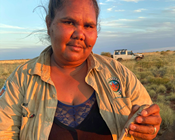
Managing jilas and fire on Ngurrara Country
Wed, 08 Dec 2021Ngurrara Rangers Chantelle Murray and Sumayah Surprise talk about the importance and benefits of a Ngurrara led hub project which is supporting rightway fire and caring for jilas on their desert Country.
-
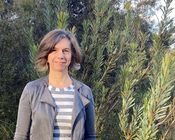
Supporting the work of the Australian Government’s Threatened Species Commissioner
Wed, 08 Dec 2021Dr Fiona Fraser talks about the valuable role that the Threatened Species Recovery Hub has played by delivering research that has supported decision-makers to better understand, manage and conserve Australia’s environment with world-class science.
-
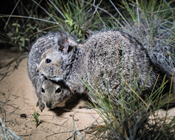
Science for the West
Tue, 07 Dec 2021Dr Margaret Byrne, Executive Director, Biodiversity and Conservation Science, Western Australian Department of Biodiversity, Conservation and Attractions talks about how the Threatened Species Recovery Hub has benefited Western Australian threatened species.
-
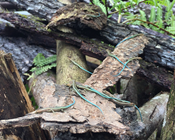
Collaboration benefits threatened species in national parks
Tue, 07 Dec 2021Nicholas Macgregor, Science Manager of Parks Australia talks about how Parks Australia and the Threatened Species Recovery Hub have worked together to make a significant contribution to conservation.
-
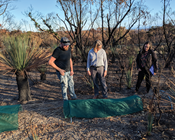
Supporting the Australian Government’s Black Summer bushfires response
Tue, 07 Dec 2021Glenn Block, Principal Director, Bushfire Recovery Programs Branch of the Department of Agriculture, Water and the Environment talks about how coordination and collaboration with researchers from the hub has been key to the Australian Government’s rapid and informed response to the Black Summer bushfires of 2019–20.
-
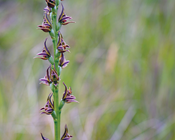
Preventing extinctions through emergency action
Tue, 07 Dec 2021Some recent extinctions in Australia were predicted yet occurred nonetheless because management responses were enacted too slowly, ineffectively, or not at all. Take a look at some of the research undertaken by the hub for species at critical risk of extinction.
-
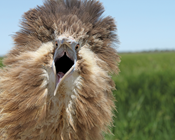
Using social and economic opportunities for the conservation of threatened biodiversity
Tue, 07 Dec 2021Threatened species occur across a wide variety of land tenures, including across agricultural, urban and industrial areas. Effective conservation of all species therefore requires meaningful engagement with a wide variety of land managers.
-
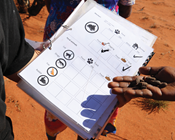
Supporting Indigenous-led research for threatened and culturally significant species
Tue, 07 Dec 2021A key priority of the hub has been empowering Indigenous leadership and management of significant plants and animals. Check out a few of our achievements in this area
-
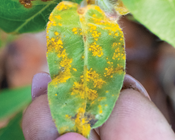
Reducing threats to species and ecosystems to promote recovery
Tue, 07 Dec 2021Identifying and effectively controlling the threats facing threatened species is crucial to their conservation, but there are still many gaps in knowledge about how to most effectively manage these threats.
-
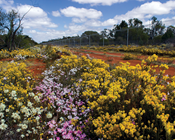
Providing safe havens and bringing species back
Tue, 07 Dec 2021Hub research has filled major knowledge gaps around if and when to translocate species, the best methods, genetic considerations, impacts to existing species at a site, monitoring and evaluation and national priorities.
-
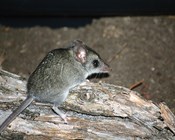
Improving detection and tracking of how species are doing
Tue, 07 Dec 2021Robust monitoring is essential to knowing whether species are recovering, stable or declining; whether management is working; and which species are in greatest need of assistance.
-
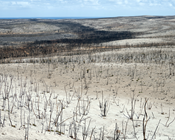
As we approach our next fire season, what have we learnt about how to minimise impacts to nature?
Tue, 07 Dec 2021Professor John Woinarski reflects on our land shaped by fire, how the pace and direction of this shaping is changing, alarmingly and what it means for the future.
-
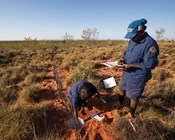
Science to improve monitoring
Tue, 07 Dec 2021Hub Research Director Professor David Lindenmayer from the Australian National University reflects on the progress of the hub to improve threatened species monitoring in Australia.
-
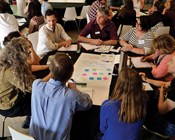
The ups and downs of working at the science–policy nexus
Tue, 07 Dec 2021Hub Deputy Director Professor Martine Maron from The University of Queensland discusses the importance and challenges of providing science to support policy.
-
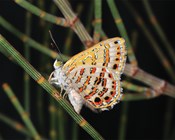
A major step forward in preventing extinctions
Tue, 07 Dec 2021Hub Deputy Director Professor Stephen Garnett from Charles Darwin University talks about the challenge and achievements in providing science to prevent extinctions in Australia.
-

The Threatened Species Recovery Hub: Reflections
Tue, 07 Dec 2021Dr Steve Morton, Chair of the Threatened Species Recovery Hub's Steering Committee reflects on the journey and legacy of the hub.
-

Endangered frogs collected from fire impacted areas for safekeeping
Fri, 09 Jul 2021The deadly chytrid amphibian fungal disease and predation by non-native fish have driven large declines in the endangered spotted tree frog. In north-east Victoria bushfires and flooding have added to this already perilous state. In response 19 frogs have been collected for a captive breeding recovery program.
-
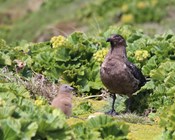
How the brown-skua, a top-native predator, is responding to rabbit eradication on Macquarie Island
Fri, 09 Jul 2021What impact did the rabbit eradication on Macquarie Island have on brown skuas (a top-native predator that preyed on the rabbits)? We asked PhD candidate Toby Travers from the University of Tasmania who has been investigating the skua response.
-
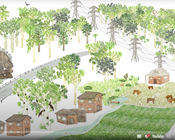
The ins and outs of biodiversity offsetting explained
Wed, 02 Jun 2021Biodiversity offset policies and practices can be hard to get your head around. They may seem abstract but globally they have a big impact on the environment. This series of 9 short plain language videos helps explain key concepts and challenges.
-
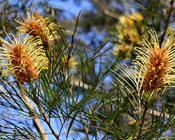
Threatened plant trends in the spotlight
Thu, 11 Mar 2021The Threatened Species Index now includes monitoring data for threatened plants. Dr Ayesha Tulloch of The University of Sydney and Dr Micha Jackson of The University of Queensland discuss what the index has revealed about Australia’s threatened plants.
-

eDNA: A successful technique for identifying cryptic species in a remote location
Thu, 11 Mar 2021Dr Justine Shaw and PhD candidate Jeremy Bird from The University of Queensland talk about how they tested new eDNA methods to see if they could shed light on some aspects of Macquarie island’s burrowing petrels. They collaborated with molecular ecologist Dr Julie McInnes from The University of Tasmania to undertake this work.
-

Biodiversity sensitive urban design: The future of cities
Thu, 11 Mar 2021Dr Georgia Garrard of The University of Melbourne explains how a new framework for biodiversity sensitive urban design (BSUD) can support local governments, urban planners and architects to reduce development impacts on biodiversity and increase the benefits that nature in cities can deliver to residents.
-
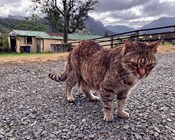
Diseases spread by cats have a $6 billion impact on health and agriculture every year
Thu, 11 Mar 2021A new study led by Professor Sarah Legge at The Australian National University and Dr Patrick Taggart from The University of Adelaide has quantified the national impact of cat-borne diseases on human health and agriculture in Australia for the first time.
-

Producing science for policy
Thu, 11 Mar 2021You’ve done some cutting edge research, but will it make a difference? Dr Rachel Morgain of The Australian National University and Professor Martine Maron of The University of Queensland talk about what researchers need to know about engaging with policy-makers.
-
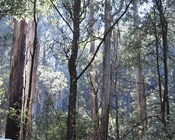
Beyond offsetting: Target-based ecological compensation
Thu, 11 Mar 2021Professor Martine Maron and Dr Jeremy Simmonds of The University of Queensland explain how target-based ecological compensation overcomes some of the challenges associated with biodiversity offsetting, such as the difficulty of achieving genuine “No Net Loss”.
-
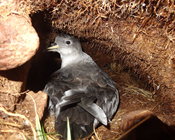
Delivering science for saving species: A few of our big successes
Tue, 09 Mar 2021Our projects provide valuable knowledge to support better decision-making for pressing challenges facing threatened biodiversity. Read about some of our big successes here
-
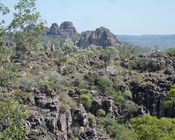
The economics of threatened species
Mon, 08 Mar 2021What price persistence? Dr Ram Pandit of the University of Western Australia (UWA), Dr Kerstin Zander of Charles Darwin University (CDU), and several researchers from both UWA and CDU are taking a close look at how people value threatened species, with some surprising – and heartening – results.
-

Solutions to Australia’s most pressing biodiversity policy challenges
Mon, 08 Mar 2021As we reach the final months of the Threatened Species Recovery Hub’s research program we’re starting to reflect on our legacy. Looking back, our six-year program was incredibly ambitious, delivering 147 research projects, but the need was great; Australia has over 1800 species and communities listed as threatened by a large, complex and interacting set of threats.
